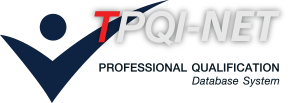หน่วยสมรรถนะ
Inspect aircraft instrument systems and components.
สาขาวิชาชีพการบิน
รายละเอียดหน่วยสมรรถนะ
| 1. รหัสหน่วยสมรรถนะ | AVT-KWIF-260A |
| 2. ชื่อหน่วยสมรรถนะ | Inspect aircraft instrument systems and components. |
| 3. ทบทวนครั้งที่ | / |
| 4. สร้างใหม่ |
|
ปรับปรุง |
|
| 5. สำหรับชื่ออาชีพและรหัสอาชีพ (Occupational Classification) | |
|
7232 Aircraft engine mechanics and fitters |
|
| 6. คำอธิบายหน่วยสมรรถนะ (Description of Unit of Competency) | |
| This unit of competency requires application of hand skills and the use of system/component knowledge and applicable maintenance publications to inspect aircraft instrument systems and components of fixed and rotary wing aircraft during scheduled or unscheduled maintenance. Work may be completed individually or as part of a team. | |
| 7. สำหรับระดับคุณวุฒิ |
| 1 | 2 | 3 | 4 | 5 | 6 | 7 | 8 |
|---|---|---|---|---|---|---|---|
| 8. กลุ่มอาชีพ (Sector) | |
| 7232 Aircraft Mechanics | |
| 9. ชื่ออาชีพและรหัสอาชีพอื่นที่หน่วยสมรรถนะนี้สามารถใช้ได้ (ถ้ามี) | |
| N/A | |
| 10. ข้อกำหนดหรือกฎระเบียบที่เกี่ยวข้อง (Licensing or Regulation Related) (ถ้ามี) | |
| ICAO Doc 7192 / EASA Part 66 | |
| 11. สมรรถนะย่อยและเกณฑ์การปฏิบัติงาน (Elements and Performance Criteria) |
| หน่วยสมรรถนะย่อย (EOC) | เกณฑ์ในการปฏิบัติงาน (Performance Criteria) | รหัส PC (ตามเล่มมาตรฐาน) |
รหัส PC (จากระบบ) |
|---|---|---|---|
| 103403.01 Inspect instrument systems and components. |
103403.01.01 Able to attach isolation tags for safe instrument systems and components inspection. |
103403.01.01 | 199793 |
| 103403.01 Inspect instrument systems and components. |
103403.01.02 Able to check isolation tags and aircraft configured for safe system inspection and operation in accordance with the applicable maintenance manual. |
103403.01.02 | 199794 |
| 103403.02 Identify and record Defects. |
103403.02.01 Able to identify and record Defects correctly in accordance with standard enterprise procedures. |
103403.02.01 | 199798 |
| 103403.02 Identify and record Defects. |
103403.02.02 Able to check Instrument system components visually or physically for external signs of defects in accordance with applicable maintenance manual while observing all relevant work health and safety (WHS) requirements. |
103403.02.02 | 199799 |
| 12. ความรู้และทักษะก่อนหน้าที่จำเป็น (Pre-requisite Skill & Knowledge) | |
|
103303 Remove and install advanced aircraft general instrument system components |
|
| 13. ทักษะและความรู้ที่ต้องการ (Required Skills and Knowledge) | |
|
(ก) ความต้องการด้านทักษะ See Appendix A (ข) ความต้องการด้านความรู้ See Appendix A |
|
| 14. หลักฐานที่ต้องการ (Evidence Guide) | |
|
(a) Performance Evidence |
|
| 15. ขอบเขต (Range Statement) | |
|
This part allows for different work environments and conditions that may affect performance. Essential operating conditions that may be present (depending on the work situation, needs of the candidate, accessibility of the item, and local industry and regional contexts) are included. |
|
| 16. หน่วยสมรรถนะร่วม (ถ้ามี) | |
| N/A | |
| 17. อุตสาหกรรมร่วม/กลุ่มอาชีพร่วม (ถ้ามี) | |
| N/A | |
| 18. รายละเอียดกระบวนการและวิธีการประเมิน (Assessment Description and Procedure) | |
|
The assessment are based on combination of paper exams, interviewing, and practical demonstrations depending on the assessors’ judgement. |
|
